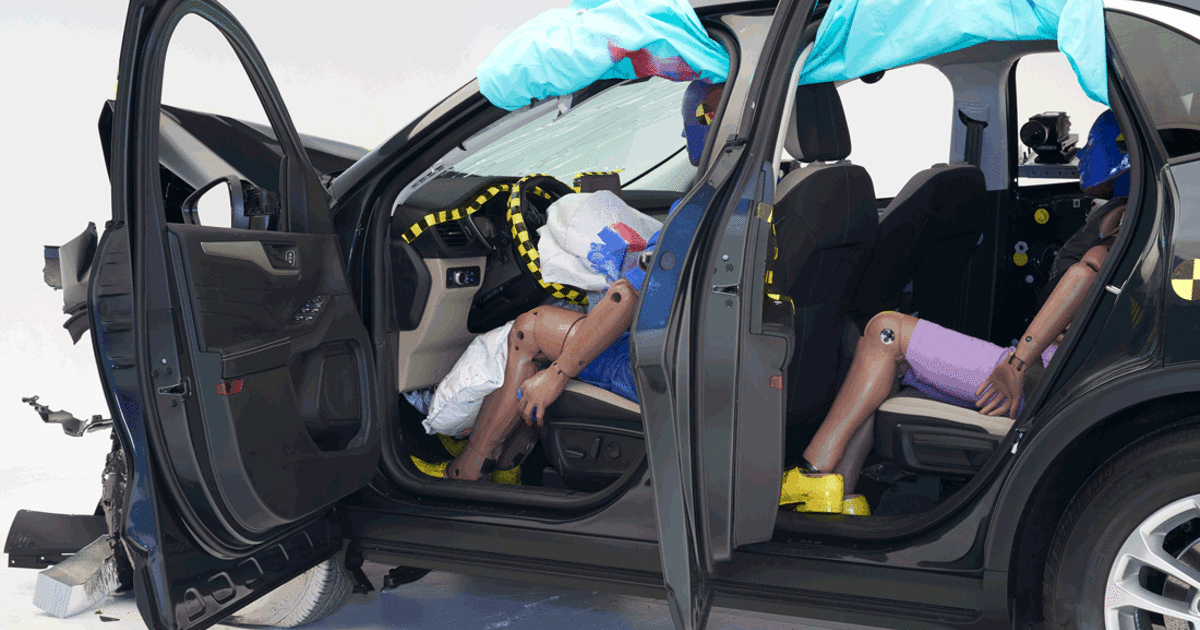
WASHINGTON — Only two out of 15 vehicles in the small crossover category earned an overall “good” rating in the first frontal crash test in the U.S. to include a rear dummy, the Insurance Institute for Highway Safety said Tuesday.
The 2022-23 Ford Escape, built after May, and the 2021-23 Volvo XC40 were the only vehicles to earn a “good” rating in the institute’s updated moderate overlap front evaluation.
The more challenging crash test adds a dummy representing a small woman or 12-year-old child positioned in the second row behind the driver. It also uses new metrics focusing on the injuries most frequently seen in rear-seat passengers.
The 2021-23 Toyota RAV4 earned an “acceptable” rating, while the Audi Q3, Nissan Rogue and Subaru Forester from those model years earned a “marginal” rating.
Vehicles that earned a poor rating are the:
• 2021-22 Buick Encore
• 2021-23 Chevrolet Equinox
• 2021-22 Honda CR-V
• 2021-22 Honda HR-V
• 2021 Hyundai Tucson
• 2021 Jeep Compass
• 2021-23 Jeep Renegade
• 2021-22 Mazda CX-5
• 2022-23 Mitsubishi Eclipse Cross
However, all 15 vehicles earned a “good” rating in the institute’s original crash test — launched in 1995 — where a vehicle travels at 40 mph toward a barrier, and a dummy representing an average-size man is positioned in the driver’s seat.
The new version uses the same test speed, offset and barrier as the original, the institute said.
“The original moderate overlap test was our first evaluation and the lynchpin of the institute’s crash testing program,” IIHS President David Harkey said in a statement. “Thanks to automakers’ improvements, drivers in most vehicles are nearly 50 percent less likely to be killed in a frontal crash today than they were 25 years ago.”
Harkey said the updated crash test is “a challenge to manufacturers to bring those same benefits to the back seat.”
To earn a “good” rating, measurements recorded by sensors in the second-row dummy “must not exceed limits indicating an excessive risk of injury to the head, neck, chest, abdomen or thigh,” the insurer-funded institute said.
Crash tensioners that tighten seat belts and prevent occupants in the front seat from flying forward also could benefit rear occupants, the institute said. Other features such as rear-seat airbags and seat belts that inflate to mitigate the effects of crash forces also could help. However, fewer than half of new vehicles have advanced restraint systems in the rear seat, the institute said.
“We’re excited to launch the first frontal crash test in the U.S. to include a rear-occupant dummy,” said Marcy Edwards, the institute’s senior research engineer who led the development of the new evaluation. “This is a fantastic opportunity to rapidly deliver big safety benefits by adapting technologies that we already know to be effective.”